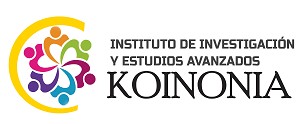A strategy based on music activities to promote motivation in a public school
Resumen
One of the biggest challenges educators deal with nowadays is to find creative ways This study used music and songs as a motivational tool in the process of learning English as a foreign language (EFL). This study used a descriptive cross-sectional design. To collect data; a questionnaire was conducted to assess whether the use of musical activities in the English as a foreign language (EFL) classroom affects students' motivation to acquire vocabulary. The findings of this research are intended to be an open door for those educators who are looking for ways to motivate students through the use of music activities and could provide some practical suggestions for integrating music lesson activities into the EFL teaching area.
Descargas
Citas
Aguirre, D., Bustinza1, D. & Garvich1, M., (2016). Influence of Songs in Primary School Students' Motivation for Learning English in Lima, Peru. Canadian Center of Science and Education, 9(2), 178 - 191.
Ajibade Yetunde, & Ndubuda Kate. (2008). Effects of Word Games, Culturally Relevant Songs, and Stories on Students’Motivation in a Nigerian EnglishLanguage Class. Tesl Canada Journal/Revue Tesl du Canada, 25(2), 27 - 48.
Ayotte, S. (2005). The Acquisition of Verb Forms Through Song (Doctoral dissertation, Michigan State University). Dissertation Abstracts International, 65, 3356A.
Baez, R. (1993). Reinforcing E.S.L. with Los Cumbancheros choral. |Dissertation conference| Office of Research, Evaluation, and Assessment; Board of Education of the City of New York. Brooklyn, NY, United States of America.
Baoan, W. (2008). Application of Popular English Songs in EFL Classroom Teaching. Humanizing Language Teaching, 10(3), 1 - 12.
Bokiev D., Bokiev U., Aralas D., Ismail L., Othman M. (2018). Utilizing Music and Songs to Promote Student Engagement in ESL Classrooms. International Journal of Academic Research in Business, 8(12), 314 - 332.
Carrillo, M., Padilla, J., Rosero, T., & Villagómez, M. S. (2009). La motivación. ALTERIDAD, 4(2), 20 - 32.
Cassany, D., Luna, M., & San, G. (2003). Enseñar Lengua. Barcelona - España: GRAÓ.
Colwell, R., & Davidson, L. (1996). Musical Intelligence and the Benefits of Music Education. NASSP Bulletin, 80(583), 55–64.
Creswell, J., Clark, V., Gutmann, M., & Hanson, W., (2003). Advanced mixed methods research designs. Handbook of mixed methods in social and behavioral research, 209 - 240.
Domoney, L., & Harris, S. (1993). Justified and ancient: Pop music in EFL classrooms. ELT Journal: An international journal for teachers of English to speakers of other languages, 47(3), 234-241.
Džanić, N. D., & Pejić, A. (2016). The Effect of Using Songs on Young Learners and their Motivation for Learning English, Netsol, 1(2), 40-54.
Emst-Slavit, G. (2001). Educación para todos: La Teoría de las Inteligencias Múltiples de Gardner. Revista de Psicología de la PUCP., 19(2), 319 - 332.
Fonseca, C (2000). Foreign language acquisition and melody singing. ELT Journal, 54(2) 146-152.
Gardner, H. (1983). Frames of mind. New York: Basic Books.
Gardner, H. (2011). Frames of Mind: The Theory of Multiple Intelligences. New York: Basic Books.
Hock, M. W. (2001). Sing along with the Internet: Making use of the Internet in the language classroom. Fremd Sprachen Unterricht, 6(2001), 15 - 27.
Huy Le, M. (1999). The role of music in second language learning: A Vietnamese perspective. In Combined 1999 Conference of the Australian Association for Research in Education and the New Zealand Association for Research in Education.
Iantorno, G., & Papa, M. (1979). The use of songs in the language class. Rassegna Italiana di Linguistica, 1(2), 179-185.
Isogai, S. & Nakanishi, M., (2013). Modeling of Music Recommendation Methods to Promote the User’s Singing Motivation. S. Yamamoto (Ed.), 439 - 448.
Katchen, J. E. (1988). Mastering English Pronunciation through Literature. |Session Conference|. The Japan Association of Language Teachers 14th Annual International Conference, Kobe, Japan.
Krashen, S. D. (1982). Principles and Practice in Second Language Acquisition. California: University of Southern California.
Kuśnierek, A. (2016). The role of music and songs in teaching English vocabulary to students. World Scientific News, 43(1), 1 - 55.
Lems, K. (2016). Learning English through Music in the Digital Age. National Clearinghouse for, 7(26), 1 - 12.
Lopez, M. J. (2011). A brief history of music. Madrid: Ediciones Nowtilous
Maess, B, & Koelsch, S. (2001). Musical syntax is processed in Broca’s area: a meg study. Nature Neuroscience, 4(5), 540-545.
Magahay-Johnson, W. (1984). Music hath charms: Music and student-centered stories in the ESL classroom. TESL Canada Journal, 1(1), 81 - 92.
Moriya, Y. (March 8-13, 1988) English Speech Rhythm and Its Teaching to Non-Native Speakers. |Session Conference|. Annual Meeting of the Teachers of English to Speakers of Other Languages. Chicago, United States.
Murphey, T. (1990). The song stuck in my head phenomenon: A melodic din in the LAD? System. TESOL Quarterly, 18(1), 53-64.
Murphey, T. (1992). Music and Song. Oxford University Press.
Noerhidayat, D. T. (2020). The Importance of English in the Era of Globalization. Rintaningrum, Ratna.
Paul, D. (1996). Songs and Games for Children. Oxford: MacMillan Heinneman, 19(1), 37-40.
Puhl, C. A. (1989). Up from under: English training on the mines. (Report on 1988 research project conducted at Gold Field Training Services). Stellenbosch, South Africa: University of Stellenbosch. (ED No. 335 864)
Ritter, S, & Ferguson S, (2017) Happy creativity: Listening to happy music facilitates divergent thinking. Plos one,12(9), 1 - 14
Samoye, Piri (2018). The Role of Music in Second Language Learning: A Vietnamese. Research in Education and the New Zealand Association, 17(1), 13 – 21.
Sigurðardóttir, D. (2012). Language Learning through Music. Menntavísindasvið Háskóla Íslands, 25(2), 1-33.
Tuan, L & Viet An, P. (2010). Teaching English Rhythm by Using Songs. Studies in Literature and Language, 1(2), 13 - 29.
Yano, C. & Shūhei, H., (2008). Popular music in modern Japan.The Ashgate Research Companion to Japanese Music, (pp. 345-362). Routledge.
Zakharenko, A. (2020). Semantic Differential Scale: Definition, Questions, Examples. Obtenido de Semantic Differential Scale: Definition, Questions, Examples: https://aidaform.com/blog/semantic-differential-scale-definition-examples.htm
Derechos de autor 2022 Julio Javier Serrano-Espinoza, Juanita Catalina Argudo-Serrano

Esta obra está bajo licencia internacional Creative Commons Reconocimiento-NoComercial-CompartirIgual 4.0.
CC BY-NC-SA : Esta licencia permite a los reutilizadores distribuir, remezclar, adaptar y construir sobre el material en cualquier medio o formato solo con fines no comerciales, y solo siempre y cuando se dé la atribución al creador. Si remezcla, adapta o construye sobre el material, debe licenciar el material modificado bajo términos idénticos.
OAI-PMH URL: https://cienciamatriarevista.org.ve/index.php/cm/oai














